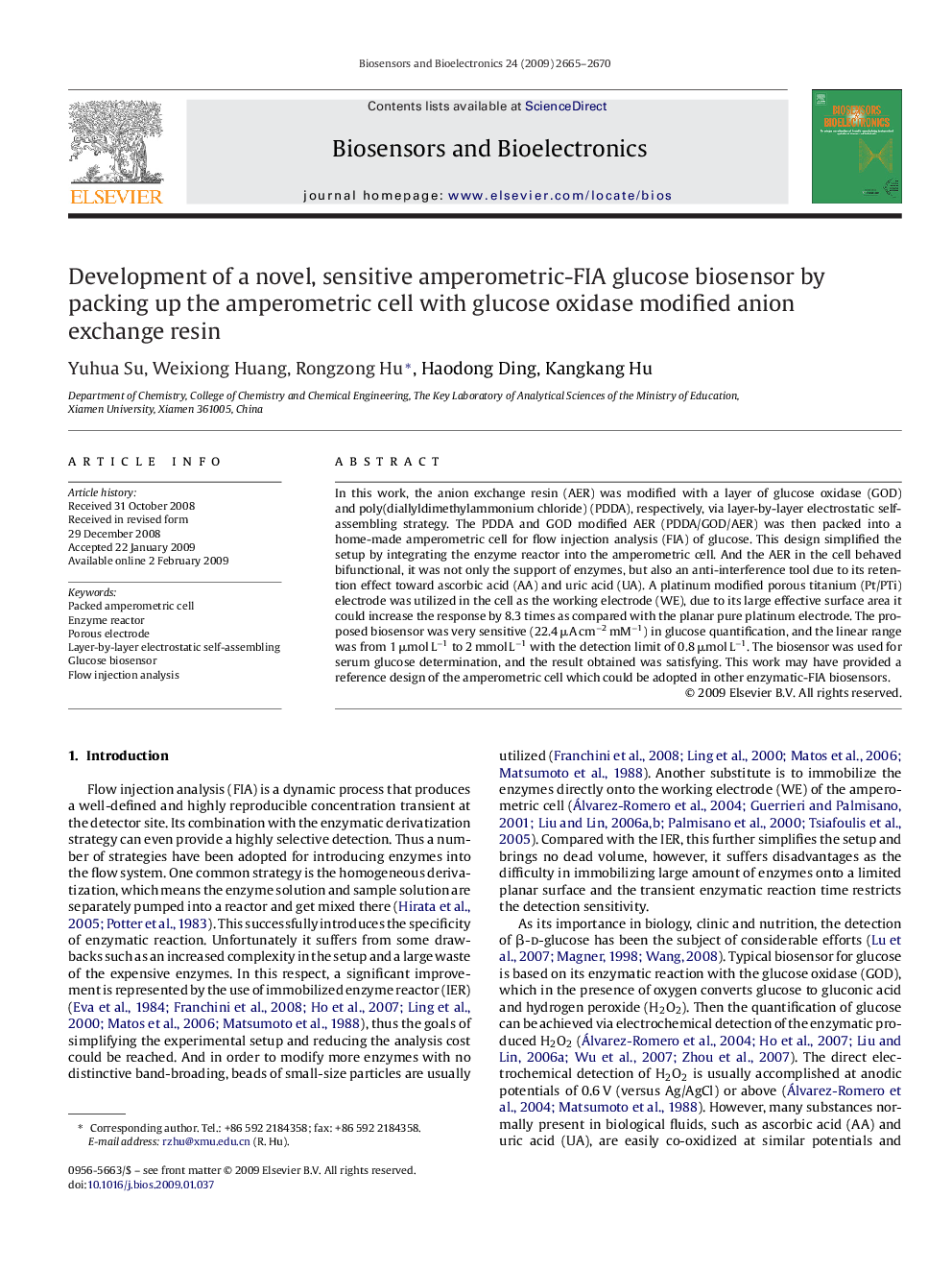| Article ID | Journal | Published Year | Pages | File Type |
|---|---|---|---|---|
| 868728 | Biosensors and Bioelectronics | 2009 | 6 Pages |
In this work, the anion exchange resin (AER) was modified with a layer of glucose oxidase (GOD) and poly(diallyldimethylammonium chloride) (PDDA), respectively, via layer-by-layer electrostatic self-assembling strategy. The PDDA and GOD modified AER (PDDA/GOD/AER) was then packed into a home-made amperometric cell for flow injection analysis (FIA) of glucose. This design simplified the setup by integrating the enzyme reactor into the amperometric cell. And the AER in the cell behaved bifunctional, it was not only the support of enzymes, but also an anti-interference tool due to its retention effect toward ascorbic acid (AA) and uric acid (UA). A platinum modified porous titanium (Pt/PTi) electrode was utilized in the cell as the working electrode (WE), due to its large effective surface area it could increase the response by 8.3 times as compared with the planar pure platinum electrode. The proposed biosensor was very sensitive (22.4 μA cm−2 mM−1) in glucose quantification, and the linear range was from 1 μmol L−1 to 2 mmol L−1 with the detection limit of 0.8 μmol L−1. The biosensor was used for serum glucose determination, and the result obtained was satisfying. This work may have provided a reference design of the amperometric cell which could be adopted in other enzymatic-FIA biosensors.
